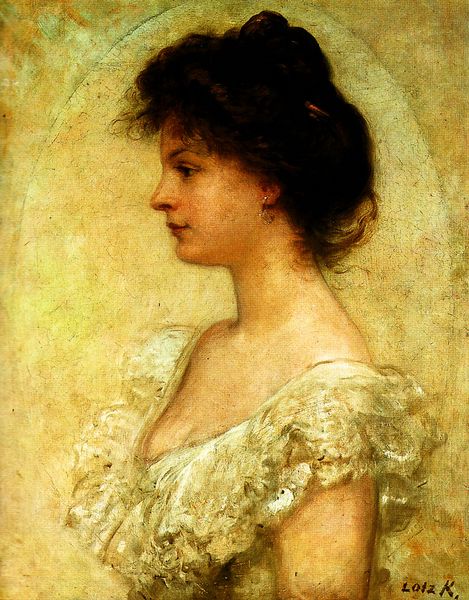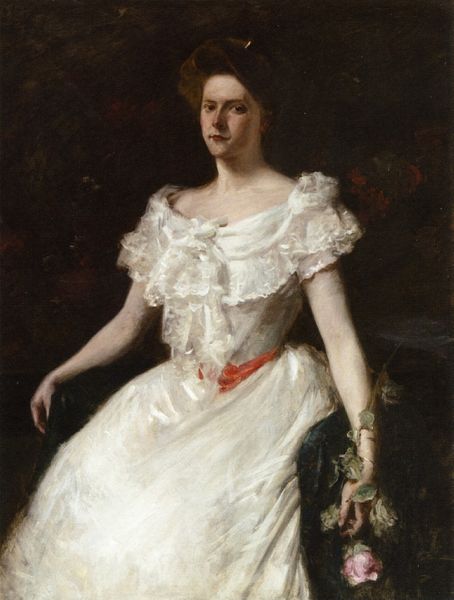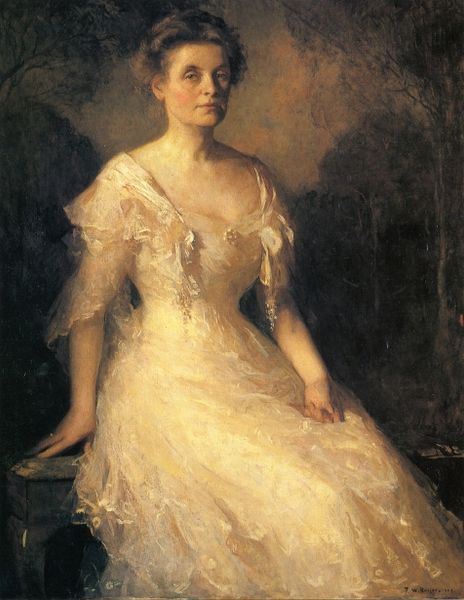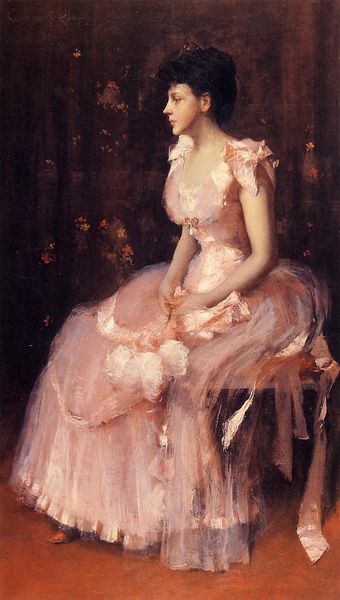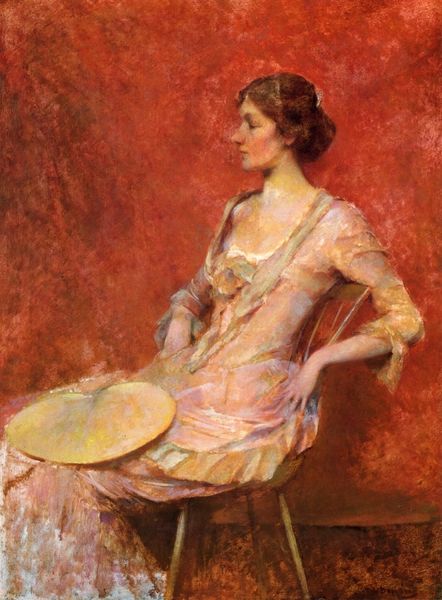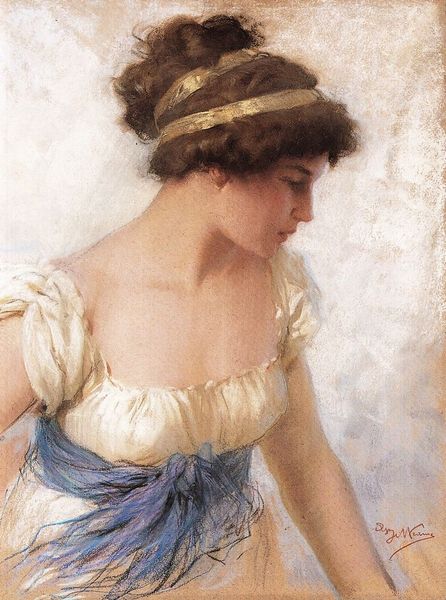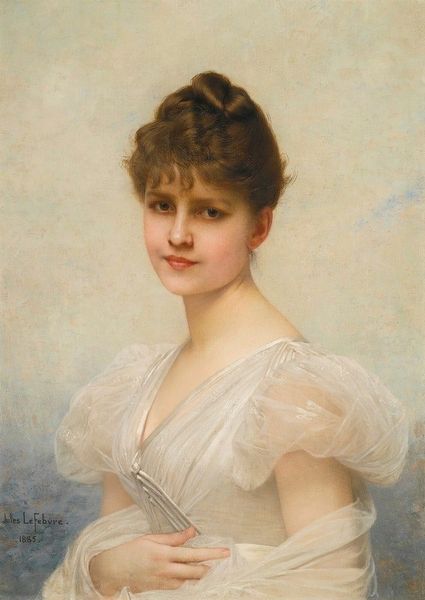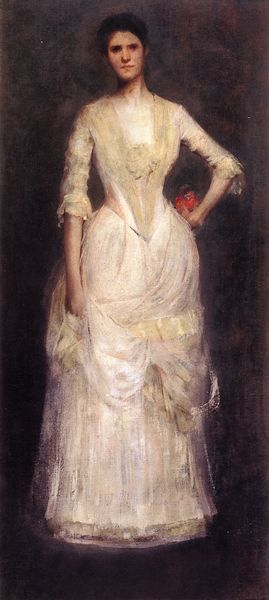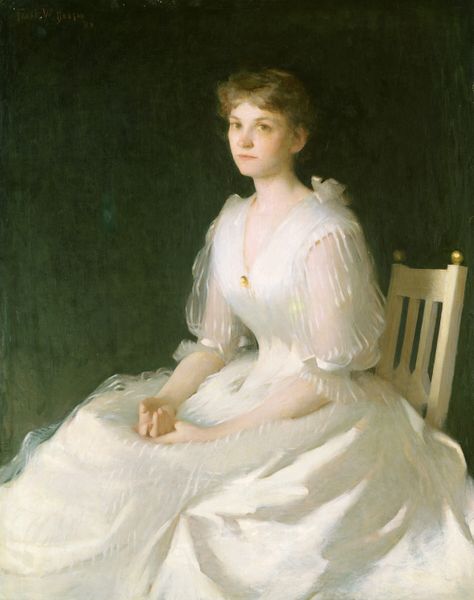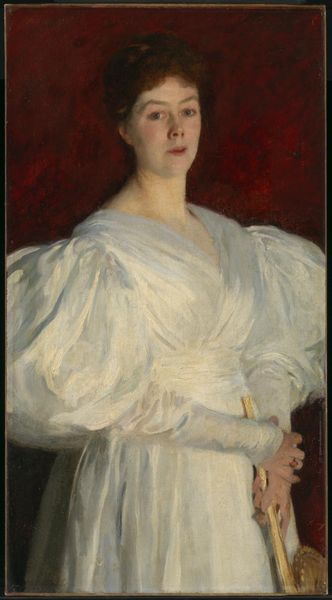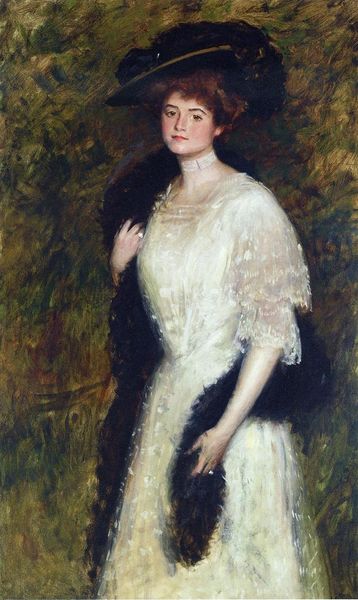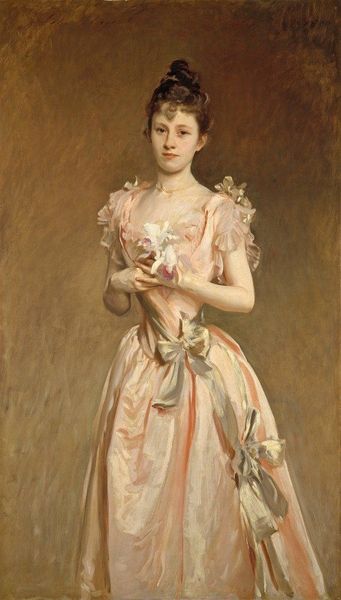
Copyright: Public Domain: Artvee
Editor: We’re looking at Thomas Wilmer Dewing's "Young Girl Seated," painted in 1896. The medium is oil paint, and there's a wistful quality to it. It's very soft and delicate. What do you see in this piece, beyond its surface appearance? Curator: I see a carefully constructed image of femininity within a very specific historical and social context. Dewing was part of the American Renaissance, a period deeply concerned with projecting an image of refinement and cultural achievement, often drawing upon European traditions. The young woman's pose, her downcast eyes, the muted color palette – it all speaks to the constraints placed on women of that era, particularly within elite social circles. How does her posture make you feel? Editor: It feels a bit passive, almost melancholic. Like she's not entirely in control of her own narrative. Curator: Precisely. Consider the gaze – averted, submissive. The delicate dress, almost like a cage, further emphasizes her containment. These details weren't accidental. They reflect prevailing societal expectations of women as objects of beauty and domesticity, rather than active participants in the public sphere. It invites the question: How complicit was Dewing in perpetuating these stereotypes, or was he subtly critiquing them? Or something in between? Editor: So, even a seemingly innocent portrait can be loaded with commentary about gender and social roles. Curator: Absolutely. Art often operates on multiple levels. It’s a product of its time, reflecting and shaping the cultural landscape. By analyzing the visual language of this painting, we can gain valuable insights into the power dynamics and societal norms that defined the late 19th century. Editor: It’s incredible how much historical and social context can be revealed in what seems like a simple portrait. Curator: And that's precisely why engaging with art history is so crucial; it allows us to critically examine not just the art, but the world that produced it.
Comments
No comments
Be the first to comment and join the conversation on the ultimate creative platform.
